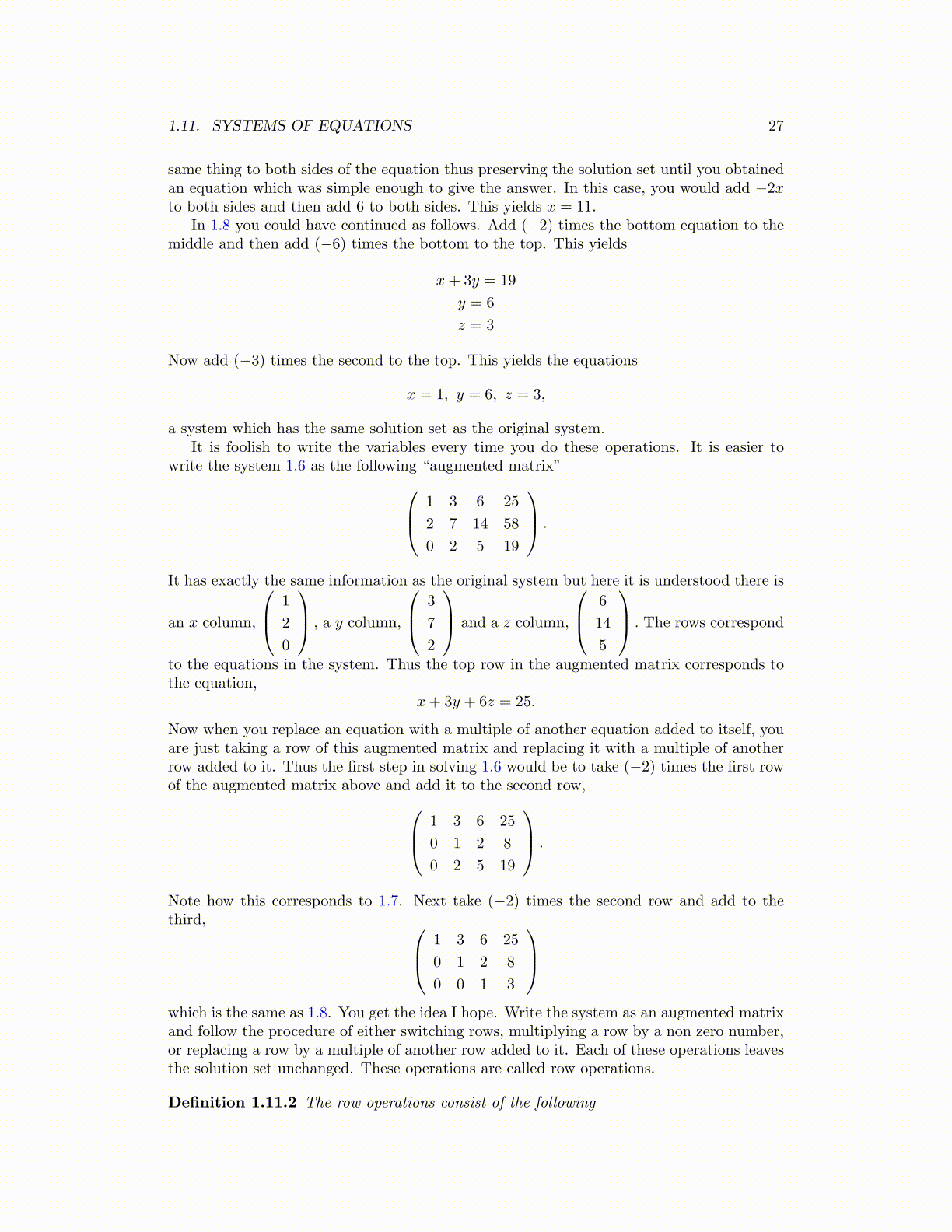
1.11. SYSTEMS OF EQUATIONS 27
same thing to both sides of the equation thus preserving the solution set until you obtainedan equation which was simple enough to give the answer. In this case, you would add −2xto both sides and then add 6 to both sides. This yields x = 11.
In 1.8 you could have continued as follows. Add (−2) times the bottom equation to themiddle and then add (−6) times the bottom to the top. This yields
x+ 3y = 19
y = 6
z = 3
Now add (−3) times the second to the top. This yields the equations
x = 1, y = 6, z = 3,
a system which has the same solution set as the original system.It is foolish to write the variables every time you do these operations. It is easier to
write the system 1.6 as the following “augmented matrix” 1 3 6 25
2 7 14 58
0 2 5 19
.
It has exactly the same information as the original system but here it is understood there is
an x column,
1
2
0
, a y column,
3
7
2
and a z column,
6
14
5
. The rows correspond
to the equations in the system. Thus the top row in the augmented matrix corresponds tothe equation,
x+ 3y + 6z = 25.
Now when you replace an equation with a multiple of another equation added to itself, youare just taking a row of this augmented matrix and replacing it with a multiple of anotherrow added to it. Thus the first step in solving 1.6 would be to take (−2) times the first rowof the augmented matrix above and add it to the second row, 1 3 6 25
0 1 2 8
0 2 5 19
.
Note how this corresponds to 1.7. Next take (−2) times the second row and add to thethird, 1 3 6 25
0 1 2 8
0 0 1 3
which is the same as 1.8. You get the idea I hope. Write the system as an augmented matrixand follow the procedure of either switching rows, multiplying a row by a non zero number,or replacing a row by a multiple of another row added to it. Each of these operations leavesthe solution set unchanged. These operations are called row operations.
Definition 1.11.2 The row operations consist of the following